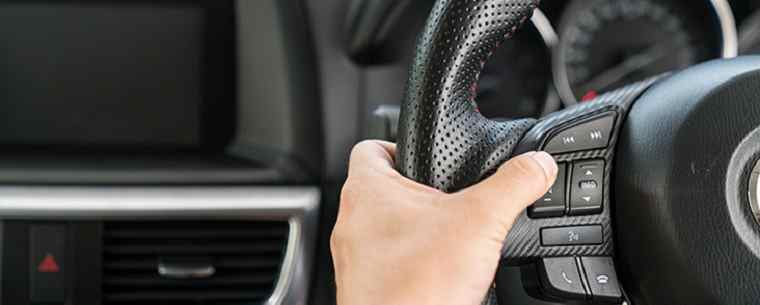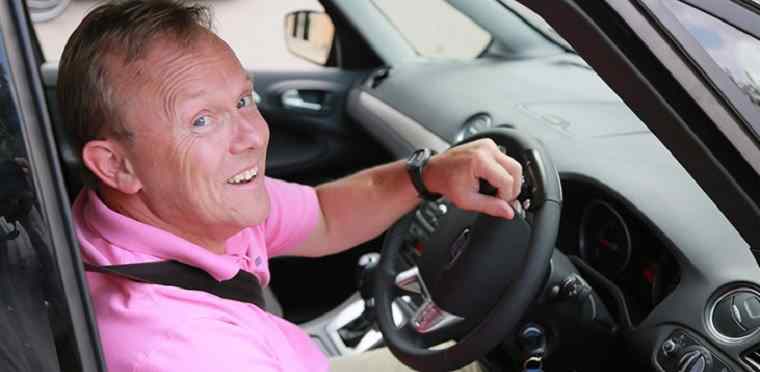How Advanced Driver Assistance Systems can help drivers with disabilities
Kwik Fit | Wednesday 1st August 2018 10:00am

Automotive technology is advancing very quickly and there are a growing number of features available today that help boost car and driver safety. Some of these are known as Advanced Driver Assistance Systems (ADAS) and they check things such as braking, speed and steering tasks, and then either automatically take action or send an alert to the driver. In particular, these features can help drivers with limited mobility and disabilities with certain tasks, such as twisting in their seats to see behind them.
There is debate about the advantages and disadvantages of not having complete control over a car with these systems. Nonetheless, figures from the Department of Transport show that human error is the single biggest reason for road traffic accidents in the United Kingdom.
ADAS can reduce human error and they can be used to enhance road safety by way of:
- Accident prevention
- Lowering the seriousness of injury if a collision occurs
- Improving the chances of survival in an accident.
ADAS are always being developed and, by 2020, it is estimated that many new vehicles will have no less than two kinds of systems built in as standard. Currently, car manufacturers tend to offer this technology as an optional extra, but it is becoming more affordable.
If you are a Motability scheme customer, here are some ADAS features to check out when researching your next car:
Adaptive Cruise Control
Cruise control is the forerunner of all driver assistance systems. It feels like it’s been around forever, but in recent times it has become even more high-tech. Adaptive Cruise Control (ACC) can sustain a set speed like traditional cruise control, but it can adjust this speed based on traffic movement, too. This technology can not only make cruise control more convenient—it’s also a move towards autonomous driving!
Manufacturers have their own names for these systems, but the basic premise is that a car can accelerate or decelerate automatically. To do that, a vehicle must be kitted out with sensors that enable it to identify obstacles and nearby vehicles. Nearly all ACC systems use radar, although cameras can be used as well. The sensors communicate with a computer that oversees the throttle and, at times, the steering and brakes.
Traffic Jam Assist
Trying to drive when there’s congestion is always a demanding situation! With Traffic Jam Assist, the car evaluates the distance from other vehicles and takes over acceleration and deceleration, whilst still keeping the vehicle in the lane. This means you only need to be concerned about steering.
Autonomous Emergency Braking
As with ACC, Autonomous Emergency Braking (AEB) works via sensors that scour the road ahead for obstacles. ACC and AEB will often share the same sensors, although some systems include cameras that can see cyclists and pedestrians at the edge of the road. Complex algorithms are used to almost instantly evaluate the probability of impact. The AEB system will then warn of the approaching hazard with dashboard lights and an alarm, before operating all-out braking force if you don’t react.
If you’re driving quickly, the emergency braking may only be able to lower the speed slightly before the unavoidable accident. At lower urban speeds, there’s a greater likelihood that the looming collision may be avoided altogether. AEB technology is also being developed to circumvent head-on crashes and junction crossing crashes.
Lane departure warning/lane-keep assist
This technology is already fitted to some vehicles. However, it is being further improved to make sure that cars aren’t steered out of the lane they’re in. In some situations, an alert (i.e. a pulse through the steering wheel) is given to the driver and in other instances, the vehicle will lightly steer to keep the car in the lane. This is especially useful on dual carriageway and motorways.
Blind spot detection
Blind spot detection is already accessible in various forms. This can be as straightforward as a light on the wing mirror that shows that a vehicle is sitting in your blind spot. Other blind spot detection features stop you from driving into another lane if there’s a chance you’ll hit a vehicle you can’t see. This is especially beneficial for drivers with limited mobility who can’t physically turn around to check their blind spots.

Road sign detection
A road sign detection system has a forward-facing camera which searches the road ahead for road signs. This camera is hooked up to character recognition software which reads any changes illustrated by the sign. It then relays this on to the vehicle’s instrument panel. The data stays there until any changes occur.
So, if you’re uncertain of the speed limit, all you have to do is look at the information that the car observes. This might seem quite basic, but the technology might stop you from inadvertently speeding and encourages you to keep your eyes on the road.
Autonomous Emergency Steering
When something suddenly appears in front of your car, Autonomous Emergency Steering technology can operate emergency braking when it concludes that a collision is unavoidable. This stops vehicles being driven off the road into objects such as crash barriers on motorways. The tech can also steer the car to help avoid head-on collisions.
Self-parking
This was once a feature only seen with ‘premium’ brand cars, but self-parking, or automatic parking, is increasingly being made available to all manufacturers. We have all faced parking challenges, and parallel parking, in particular, can cause a lot of stress! Self-Parking technology goes one step ahead of technology such as parking sensors by discovering spaces, and then—with some help from the driver—parking your vehicle into that space for you.
Finally...
A lot of this technology is already available from car manufacturers in different forms. Some of these systems can even work as one; for instance, lane-keep assist and Adaptive Cruise Control combine to give a more ‘assisted’ driver experience. We expect that these technologies will continue to develop and evolve into even smarter and more innovative features to further enhance the driving experience for disabled drivers.
This article was written by Tim Barnes-Clay for the Motability Scheme. To learn more about the Motability Scheme and to find out if you are eligible to lease a car in exchange for your mobility allowance, visit www.motability.co.uk
Any facts, figures and prices shown in our blog articles are correct at time of publication.
Featured Articles
Is it Illegal to Drive With One Headlight?
Saturday 19th July 2025
Wondering if it’s illegal to drive with one headlight? Learn about the safety risks and penalties of illegal blown bulbs and why you should fix them promptly.
Air Con in EVs & Hybrids: Experts Answer Your Questions
Monday 30th June 2025
Does air con drain EV batteries? Can you use the air con while charging an electric car? Find out the answers to these questions & more from Kwik Fit’s experts.
Why Is Your Car Making a Noise? Fixes & Tips
Friday 13th June 2025
When your car starts making unexpected noises, it can certainly be quite disconcerting; it may be nothing to worry about, but here’s what you need to know.










